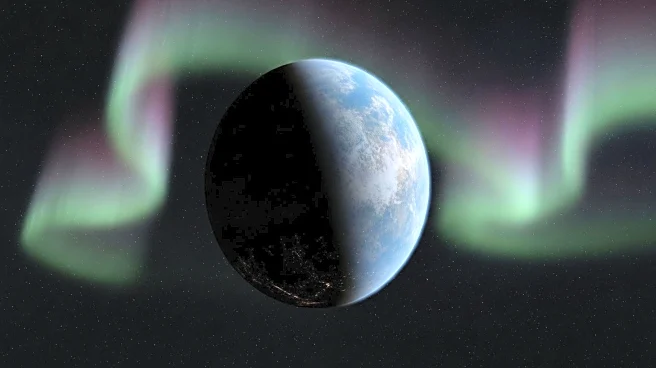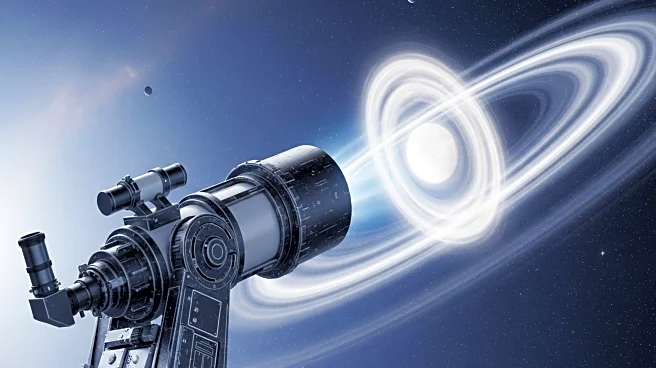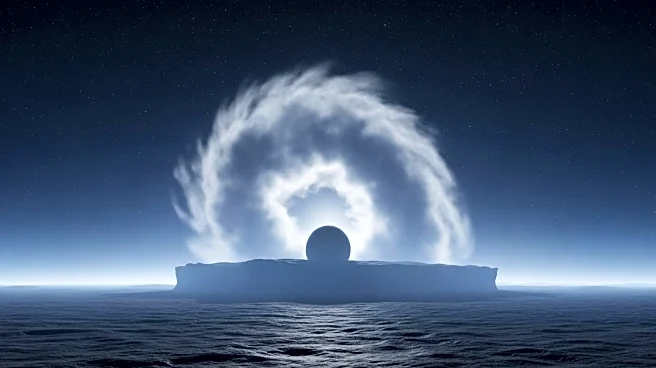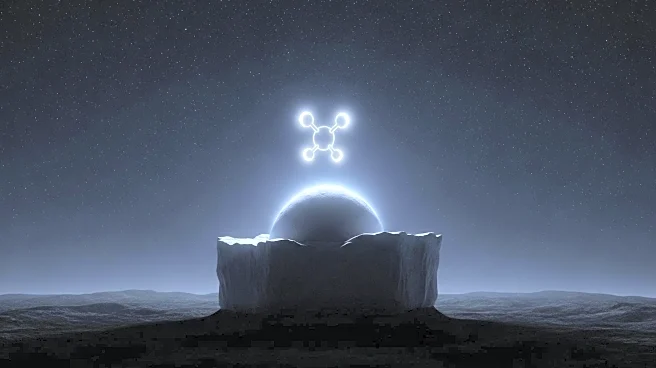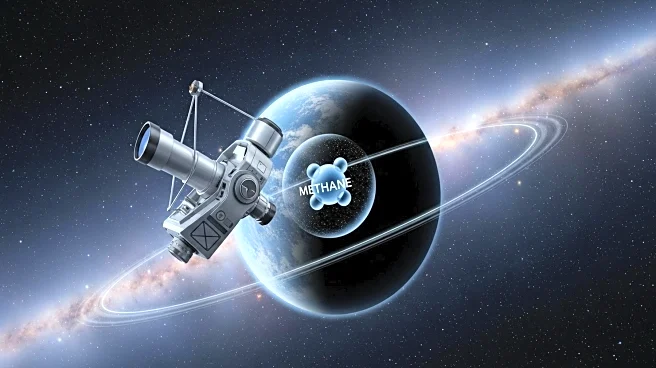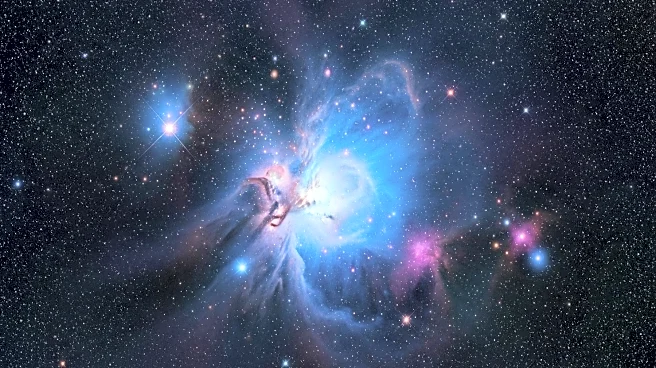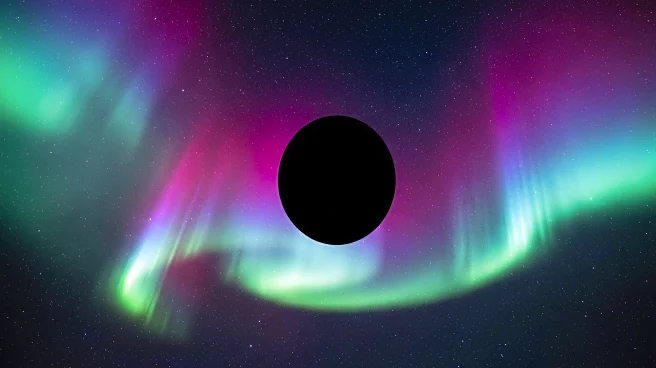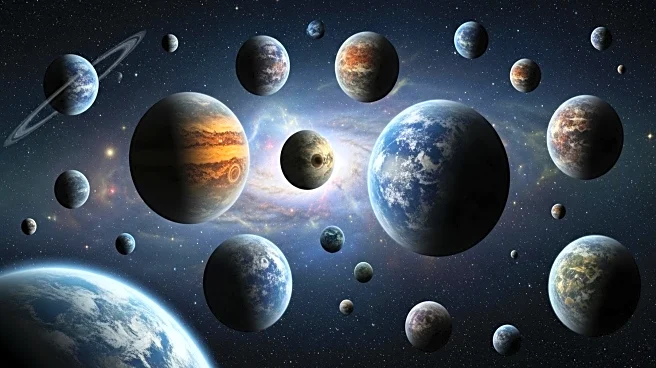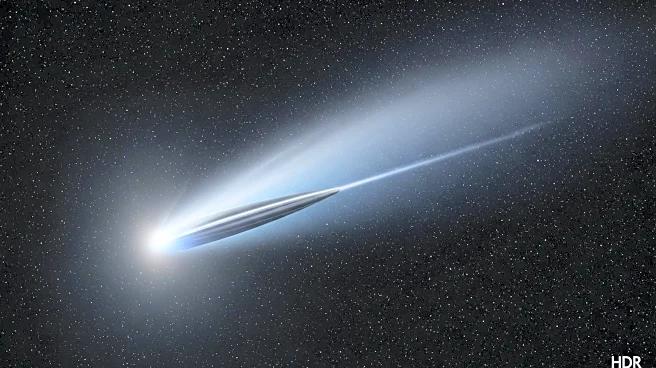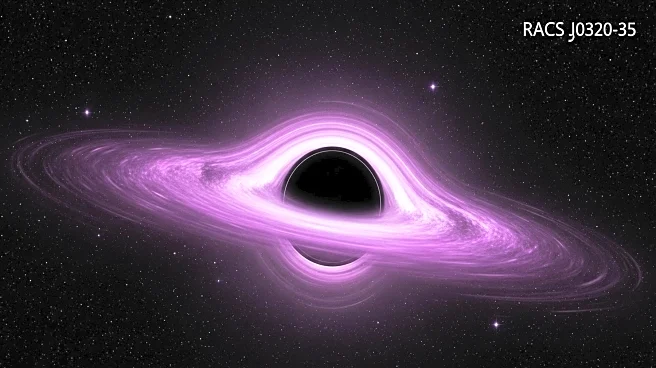What's Happening?
The James Webb Space Telescope (JWST) has provided a detailed view of the Crystal Ball Nebula (NGC 1514), located 1,500 light-years from Earth in the constellation Taurus. This nebula, formed from the outer layers of a dying star, is now visible in unprecedented detail thanks to JWST's advanced infrared capabilities. The nebula features two dusty rings and a bright pink core, with a binary star system at its center. The primary star, now a white dwarf, emits ultraviolet radiation that excites the surrounding gas, causing it to glow. This discovery builds on previous observations made by NASA's Wide-Field Infrared Survey Explorer (WISE) in 2010.
Why It's Important?
The enhanced view of the Crystal Ball Nebula offers significant insights into the life cycle of stars similar to our Sun. Understanding the formation and structure of planetary nebulae can provide clues about the future of our solar system. The absence of complex carbon molecules, common in other nebulae, in NGC 1514, allows for a clearer view, which could lead to new discoveries about the composition and evolution of such celestial bodies. This research contributes to the broader field of astrophysics by improving our understanding of stellar death and the formation of nebulae.

